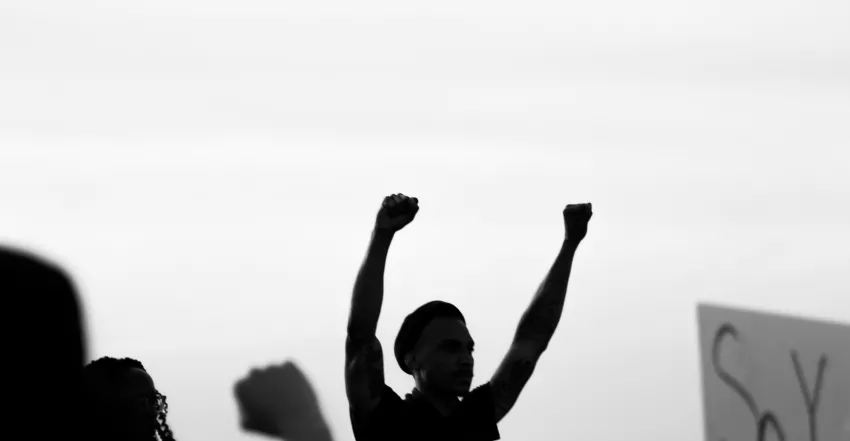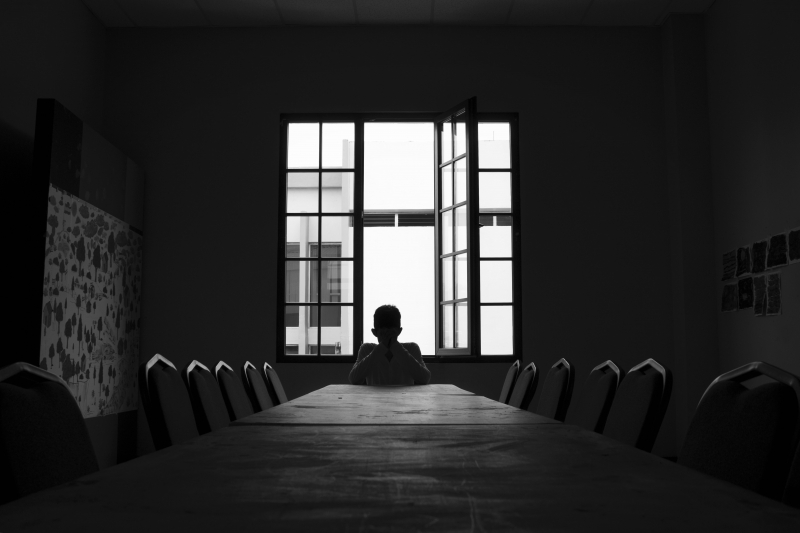It was May 18th and students were logging into the zoom session for the first day of remote instruction. The first words I heard were, “oh my God, my professor is black.” This was said with obvious dismay and followed by abrupt quiet. I sat in stunned silence for what felt like eternity. I later learned from watching the class recording that the awkward silence lasted only seconds. Unable to process the moment, to make it a “teachable moment,” I launched into my planned course overview. The entire time I felt uncomfortable. I felt like a racialized specimen under a microscope being picked apart and judged by my students. Adding to my discomfort, when I sought institutional support and advice for myself, Human Resources advised me to start a dialogue with the student instead of addressing the anxiety I expressed about the zoom incident.
The second week of class was defined by George Floyd’s killing and national and international protests against racism, police, violence, and the failings of the justice system. George Floyd is a tragic variation on a theme I have lived for years. It triggered thoughts of my brother, dead for thirteen years and murder unsolved. I thought about Antwon Rose Jr., who was shot in the back by an East Pittsburgh police officer fifteen minutes from my home. I thought about the safety of my son, my cousins, and friends. I protested along with millions. While my television and social media feeds showed a nation’s discontent and balanced on a razor’s edge of change, I taught students how to write a thesis and organize their paper. For two hours every day I battened down the hatches and tried to just be a teacher. The tumult of the outside world came through in a student paper with an off-topic denunciation of protesters, another student wearing blue lives matters t-shirts, and class discussions in which I barely kept the peace between some of the more vocal students. I felt judged for the color of my skin by my students and unsupported by administration. The words “oh my God, my professor is black” repeated in my mind the entire six weeks of class.
Three months later the writing faculty received an email reminder to administer a writing diagnostic. In contrast to previous semesters, this email contained an essay “Black Men in Public Spaces” by Brent Staples, which we were encouraged to use instead of one of our own choice. This 1988 essay is Staples’s reflection on the way in which blackness is seen as menacing and threatening in public spaces even in the absence of provocation. This fear, he notes, is perilous to the health and safety of black men (and women). I thought of Rodney King, Jonny Gammage, Sandra Bland, Michael Brown, Tamir Rice, Eric Garner, Rayshard Brooks, Elijah McClain, Philando Castille, Alton Sterling, Atatiana Jefferson, and Breonna Taylor. Tragically, over thirty years later and Staple’s narrative continues to have relevance. While I was not there for any faculty discussion related to choosing the essay, it was clear that someone decided to seize the moment and make it teachable. I did not want a teachable moment. I did not want to teach my trauma. I chose to assign an essay on social media and literacy, desperate to avoid a repeat of my uncomfortable summer class.
September 23rd was a blur. I know Breonna Taylor had been dead for six months on September 23rd when the grand jury declined to charge officer Myles Cosgrove in her death. I know Breonna Taylor was in her bed when officer Myles Cosgrove fired the shot that killed her on March 13th 2020. I know another officer was indicted on three counts of endangerment of Taylor’s neighbor. I know I taught three classes. I do not remember what I taught. I do not remember what I said. I remember hurriedly cutting my last class short to cry in my car. I remember I was paralyzed with grief and unable to drive.
Across the street from where I cried in my car, Dannielle Brown sat on day 77 of her hunger strike demanding answers in the death of her son Marquis Brown. The official Duquesne University report states that in October 2018 university police responded to a call concerning Marquis Brown acting erratically. Shortly after police arrived, Marquis Brown managed to throw a chair through a window and jumped sixteen floors to his death. Danielle Brown has and continues to question the official story and criticize the university’s response to her son’s death. The questions she asks are, what if anything was done to de-escalate the situation? Did officers view Marquis Brown, a black man, as a person in crisis or a threat? A trail of bodies that have led to the current moment of civil unrest make it necessary to ask these questions. I sat in my car crying, watching a mother’s protest, and listening to the swelling sounds of protest coming from two blocks away in response to the grand jury’s decision in the Breonna Taylor case. In the days that followed, as protests large and small swelled so close that they could be seen from classrooms and dorm rooms, the university reminded faculty to think of their students.
So, what have I learned from all of this? First, I’ve grown to hate the phrase “teachable moment.” In response to the swell of civil unrest, universities have encouraged faculty to talk to students and make this a teachable moment. I never realized, until confronted with a moment that I was not emotionally equipped to teach, how much pressure there is to be always be ready for “the moment.” Second, the amount of intellectual and emotional work that is being asked of instructors is astronomical. In addition to our regular work there are emails suggesting the adoption of “antiracist” readings and ideas for class discussion. We are asked to put statements of solidarity against systemic racism in our syllabi. We are told to be flexible and understanding with our students. To be clear, I do not object to any of these things. The issue is every email contains more things for me to do when what I really need is support and resources to help me process everything happening. I am struggling to find my balance in a classroom where my blackness is viewed with dismay and in a world that sees my skin color as a threat.
University administration must be as responsive to the needs of faculty as they are to students. To start, they should offer free mental health treatment to all faculty—tenured and untenured—who require it at this time. They have to acknowledge and work to eliminate microaggressions that people of color, like me, experience in the classroom. Finally, they must stop pressuring instructors to teach a moment we are struggling to come to terms with. While waiting for all of these things to happen, I will continue to process my trauma and pain outside of the classroom. I will work on unlearning the thought that I have failed my students when I don’t grasp a teachable moment. And I will figure out how to be comfortable teaching while black.


